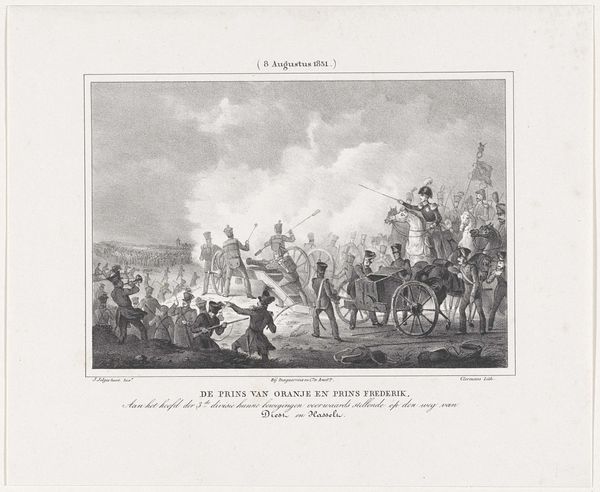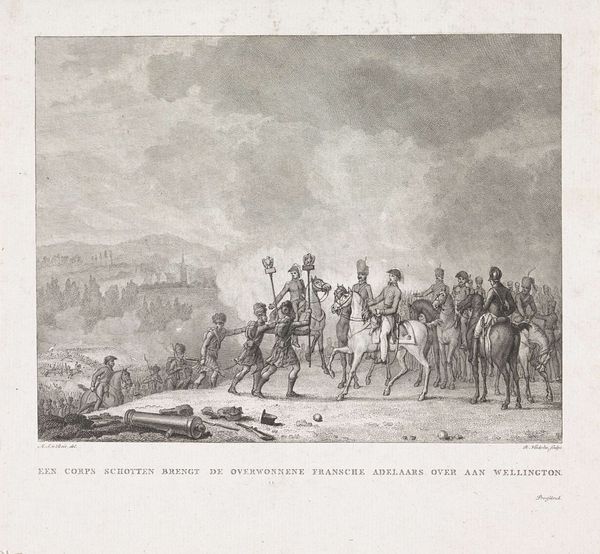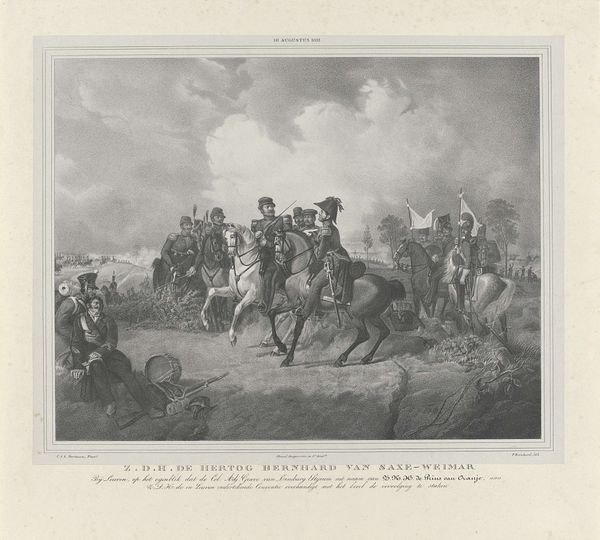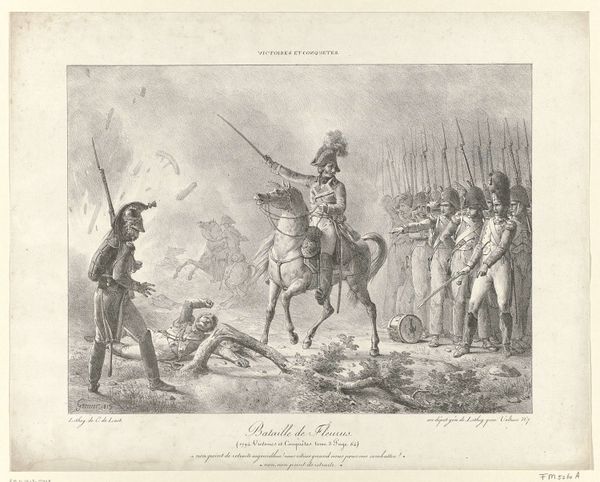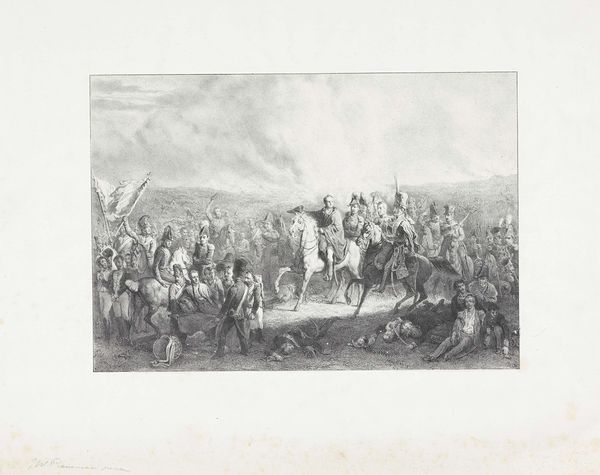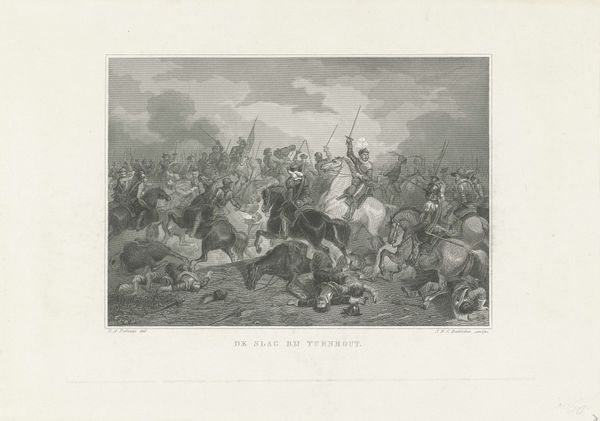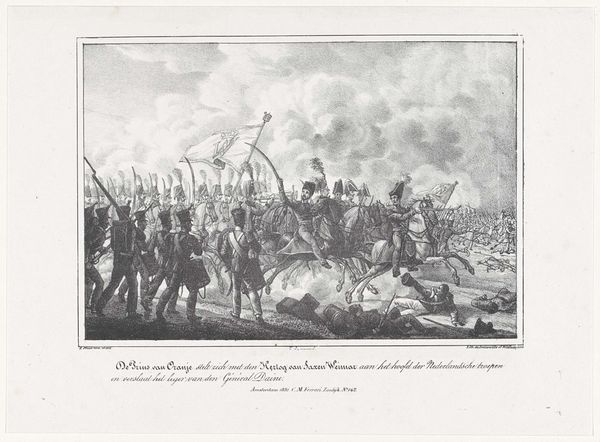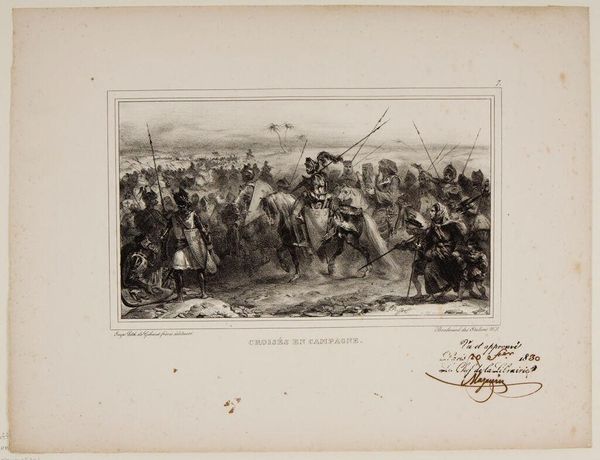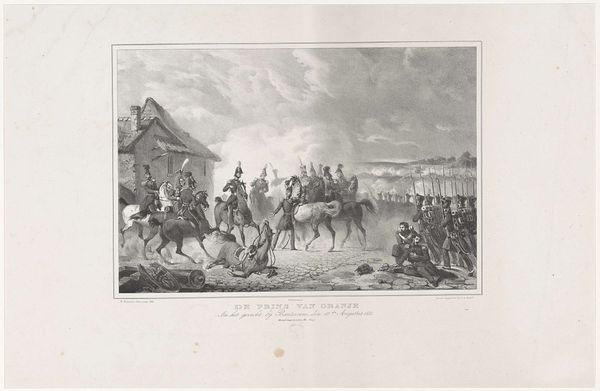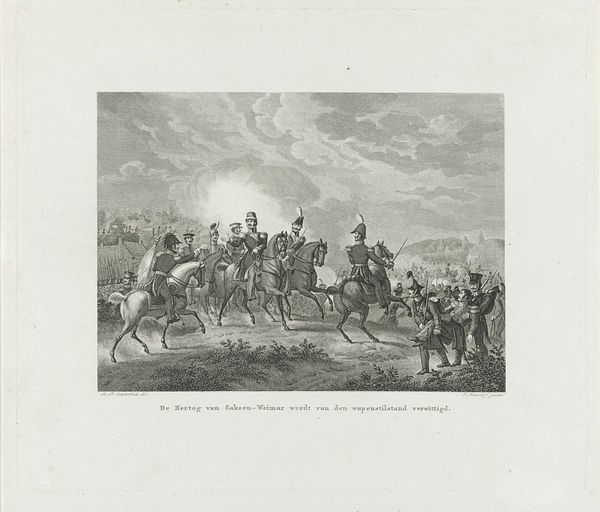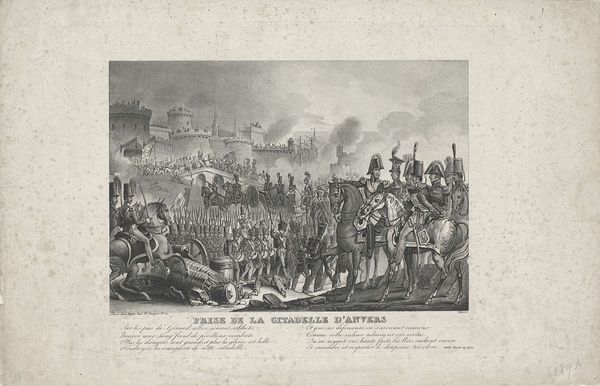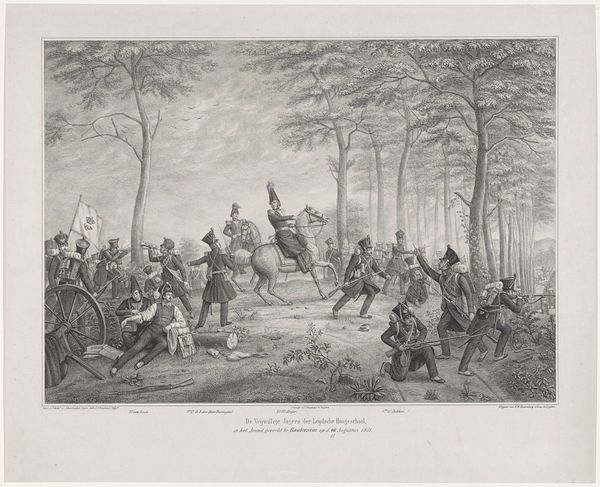
print, engraving
# print
#
landscape
#
figuration
#
romanticism
#
line
#
history-painting
#
engraving
#
realism
Dimensions: height 217 mm, width 275 mm
Copyright: Rijks Museum: Open Domain
Curator: Here we have "Slag bij Leuven, 1831," a print by J.B. Clermans commemorating a specific historical event. Editor: My initial impression is chaotic energy, a real sense of the violence and confusion of battle conveyed through this very linear engraving style. It almost looks like a newspaper illustration, meant for wide distribution. Curator: Exactly. Clermans made this print in 1831, likely as a means of documenting and circulating a particular narrative surrounding the Battle of Leuven during the Belgian Revolution. Its function was largely public and propagandistic. Editor: So, not necessarily high art meant for an elite audience, but something meant for consumption by the broader populace. I am looking at the material reality—cheap printing, meant to be accessible. Do we know how these prints were disseminated? Curator: Given the political climate, prints like these would have been widely circulated in newspapers and as separate broadsides to galvanize support for the Dutch cause during the Belgian Revolution. Its reception would hinge on political leanings, I expect. Editor: Interesting how the "heroic" figures are on horseback, elevated both literally and socially above the fray. And the prone bodies… are those the ‘enemy,’ casualties for the 'heroic' prince to overcome? This image isn't neutral; it clearly takes a position. Curator: Indeed, and that touches on the socio-political function. Clermans is clearly presenting a romanticized, Dutch-centric view of the battle. Look at the Prince of Orange— the central figure—leading the charge, seemingly unharmed amidst the carnage. The entire image works to uphold Orange's image. Editor: So, a deliberate act of image-making intended to reinforce power structures. Understanding its production—the printmaking, the economic incentives—helps us understand its broader function. Who controlled its distribution networks is really what would have shaped this image's effectiveness. Curator: Precisely. When considering how and why artworks are created, understanding social and political forces and its intended audiences become very relevant to understanding its role. Editor: It also tells a story, albeit a very specific and biased one, of a particular time and place. Curator: Ultimately it illustrates that understanding these artworks involves dissecting production, political intentions, distribution and how they were embedded within socio-historical moments. Editor: An active reading of these prints shows that its materials allow it to participate directly in public discourse.
Comments
No comments
Be the first to comment and join the conversation on the ultimate creative platform.
